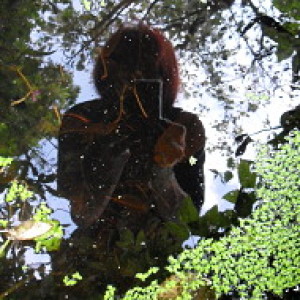I'll Take Care of Yew
A pretty corny Title for this blip - or is it? Yes, it's given me the musical link of which I'm so fond (a take on the title of the Hart/Bonamassa track which has blown me away and to which I've been listening so much lately). But it has much significance with respect to the Yew tree.
Yews (ours being the European Yew, Taxus Baccata) are probably our most ancient and esteemed tree. Many of those in this country are now believed to be as much as 3000-4000 years old. They're one of my favourite trees as I think they're very beautiful, despite their toxic properties. A case of look, but try not to touch. All parts of the tree bear strong toxins apart, apparently, from the lovely waxy red/pink anils ('berries'), although the seed within each anil is highly toxic too. The Yew has been revered for many, many centuries, being used for the production of weapons by the Norse, Celts etc. It's sacred in Druidism and Wicca, amongst other (mostly Pagan) religions, being associated with renewal, rebirth, everlasting life, and having mystical association with the Otherworld. Even the Ancient Greeks used it in funerary rituals.
The location of Yews in our churchyards is frequently most likely a case of the church having been erected at an earlier sacred site where the tree was planted, the tree having been there much, much longer than the church!
Today the chemical Taxol, found in the bark wood, provides an effective anti-cancer drug - how wonderful that life is now being provided by a tree always associated with death
This beautiful specimen lives near to the remains of the old Memorial chapel in Bracondale Woods, where I spend much time during my lunchtime walks. It's currently a joy to behold, its branches with their almost herringbone leaf pattern bearing masses of those lovely anils. As Yews go, though, it's still quite a youngster.
Unfortunately studies have shown that the ancient Yew numbers seem to be in decline. So much so that an organisation now exists to monitor the numbers and situation in this country, and attempt to protect and preserve these magnificent trees:
http://www.ancient-yew.org/s.php/new-book-yew:-a-history/3/21
So my blip title may not be so corny - because we DO need to take care of our Yews.
Here's a view of some of those cascading branches.
On my walk I came across this fascinating little bracket fungus on a decaying section of what looks like Beech wood.
- 0
- 0
- Samsung ES70, ES71 / VLUU ES70, ES71 / Samsung SL6
- 1/50
- f/8.9
- 5mm
- 100

Comments
Sign in or get an account to comment.


